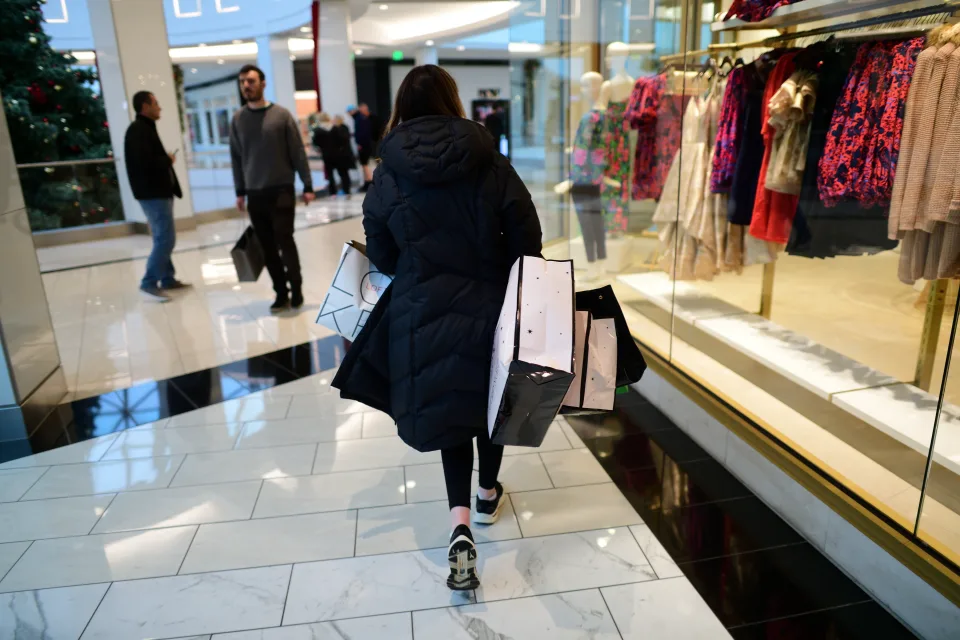
Rebecca Moore really wanted to enjoy the holidays this year and go “all out” for friends and family.
“For me, that meant spending money on quality, thoughtful gifts,” said the 32-year-old digital marketer from New York City.
“Problem is, the ‘quality, thoughtful gifts’ I ended up buying cost me more than I budgeted for, so I did the unthinkable,” she said. “I put everything on my credit cards. I’m cash poor these days and I honestly have no idea how I’m going to pay this debt off, but I went for it anyway.”
What a difference a couple of years make. Once flush with additional savings from the pandemic, many consumers have exhausted that excess cash due to ongoing inflationary pressures and are now turning to credit cards to fund their holiday spending.
“Wage growth has been averaging about 5%, but inflation is running around 7%,” said Ted Rossman, senior industry analyst at Bankrate.com and Creditcards.com. “Consumers are upside down, essentially. That’s primarily why sentiment has been so depressed.”
When the pandemic hit, demand for credit dropped due to limited spending opportunities, said Richard Barrington, Financial Analyst, Credit Sesame.
“Throughout the lockdowns and beyond, people were reluctant to travel or spend a lot of time in public due to health concerns,” he said.
Meantime, the federal government sent stimulus checks to most Americans. With a windfall of cash and limited ways to spend it, Americans’ personal savings rate — defined as the percentage of disposable (after-tax) personal income that is saved — hit a historic 33% in April 2020. It remained elevated through late 2021.
And now? New data from the Bureau of Economic Analysis shows that the U.S. personal savings rate has plummeted to 2.3%. That’s a 17-year low.
“People are also reluctant to scale back their standard of living and haven’t yet adjusted their budgets, so their first impulse is to borrow,” Barrington said.
The instinct to borrow under these circumstances makes perfect sense, but it’s unfortunate given that borrowing has gotten considerably more expensive due to rising interest rates, Rossman said. The average rate on a credit card is now 19.55%, according to the latest Bankrate data, the highest it’s been.
At the start of the year, the average rate on a credit card was 16.3%, according to Bankrate.
“For someone making only minimum payments toward $5,000 in credit card debt, the rate hikes have added seven months to the payback cycle, costing an additional $1,166 in interest,” said Rossman, when the average APR was at 19.4%.
At the same time, Americans are falling deeper into debt. Balances jumped 15% year-over-year in the third quarter. That’s the largest annual increase in more than 20 years.
“We’re back to pre-pandemic levels in terms of credit card balances,” said Rossman. “And those who are carrying balances are carrying them for a longer period of time.”
In fact, among Americans who carry credit card debt from month to month, 60% have been revolving this debt for at least a year, according to CreditCards.com. This is up from 50% last year.
Lower-income households are feeling the greatest strain.
“A greater percentage of those earning under $50,000 a year are struggling to make minimum payments,” said Barrington.
Banks are starting to take notice, but overall they’re not too worried, Rossman said.
“While we’re seeing pockets of households struggling — especially at the subprime level — the big picture is still relatively positive. Delinquencies, defaults and the average American’s debt-to-income ratio are all below historical norms,” he said. “Consumers, generally, are in pretty good shape.”
The big wild card: what happens to the job market in 2023 as the Fed tries to put the lid on inflation.
“Unemployment will rise, but does it go up to 4.5%? 5%? 6%? The hope is that if there is a recession, it will be mild,” Rossman said.
For now, he noted, “those who have been laid off are finding new jobs quickly and the single biggest predictor as to whether or not someone is going to pay down their debt is whether or not they have a job.”